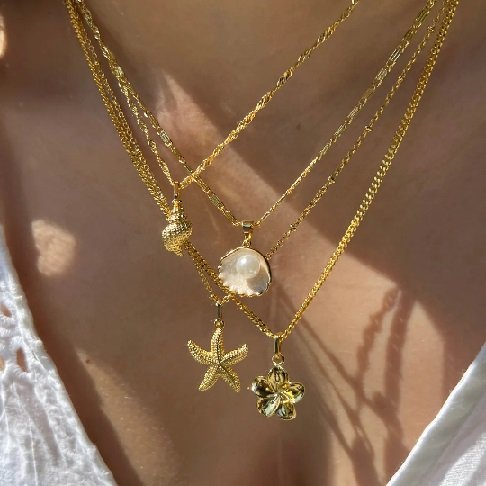
Innovation in Adornment: Modern Approaches to Artistic Jewelry Design
Jewelry has been an integral part of human expression for centuries, transcending cultural and historical boundaries. In recent times, the world of jewelry design has witnessed a remarkable evolution, with artists pushing boundaries and embracing innovative approaches. This article explores the modern trends and techniques that have redefined the landscape of artistic jewelry design.
Embracing Technology in Design
In the realm of jewelry design, technology has become a game-changer, offering designers new tools and techniques to express their creativity. Computer-aided design (CAD) has revolutionized the way jewelry is conceptualized and brought to life. Designers can now experiment with intricate patterns and complex structures, pushing the limits of what is traditionally possible.
CAD allows for precision and accuracy, enabling designers to create intricate pieces with meticulous detailing. The marriage of technology and craftsmanship has given rise to a new era of avant-garde jewelry that seamlessly blends tradition with innovation. From 3D-printed Evry Jewels to laser-ut designs, the possibilities are limitless.
Sustainable Materials and Ethical Practices
As environmental consciousness grows, so does the demand for sustainable and ethically sourced materials in jewelry design. Modern designers are increasingly turning to recycled metals, responsibly sourced gemstones, and eco-friendly alternatives to create pieces that not only captivate aesthetically but also adhere to ethical standards.
The use of recycled gold and silver reduces the environmental impact of mining, while ethically sourced gemstones ensure that the extraction process does not contribute to human rights violations. Designers are also exploring innovative materials such as lab-grown diamonds and alternative gemstones, providing eco-conscious consumers with a range of options that align with their values.
Minimalism and Personalization
In contrast to the elaborate and ornate designs of the past, many contemporary jewelry artists are embracing minimalism. Clean lines, simple shapes, and understated elegance are at the forefront of modern design trends. This shift towards minimalism reflects a desire for timeless pieces that can be worn daily, transcending fleeting fashion trends.
Moreover, personalization has become a key focus in modern jewelry design. With advancements in technology, designers can create bespoke pieces tailored to individual preferences. From custom engravings to birthstone incorporation, these personalized touches add sentimental value to the jewelry, making it more than just an accessory but a meaningful expression of one’s identity.
Fusion of Traditional Craftsmanship and Modern Design
While technology plays a significant role in contemporary jewelry design, there is a simultaneous revival of traditional craftsmanship. Many designers are drawing inspiration from historical jewelry-making techniques, infusing a sense of nostalgia into their creations. Handcrafted filigree work, intricate metal weaving, and artisanal enameling are making a comeback, albeit with a modern twist.
The fusion of traditional craftsmanship and modern design creates pieces that carry a sense of heritage while appealing to the contemporary sensibilities of today’s consumers. This blending of old and new not only pays homage to the rich history of jewelry-making but also results in truly unique and culturally rich creations.
Exploring Unconventional Materials
In the quest for innovation, designers are exploring unconventional materials to create distinctive and avant-garde pieces. From wood and ceramics to resin and even unconventional items like recycled paper, the possibilities are expanding. These materials add an unexpected element to jewelry, challenging traditional perceptions and expanding the definition of what constitutes wearable art.
The use of unconventional materials not only allows for greater creativity but also addresses sustainability concerns. Designers are finding ways to repurpose materials that would otherwise go to waste, contributing to a more circular and eco-friendly approach to jewelry design.
Final Thoughts
The world of artistic jewelry design is experiencing a renaissance, driven by a confluence of technological advancements, sustainability considerations, and a blend of traditional and contemporary influences. Designers are pushing the boundaries of creativity, exploring new materials, and embracing personalization to cater to the evolving tastes of consumers.